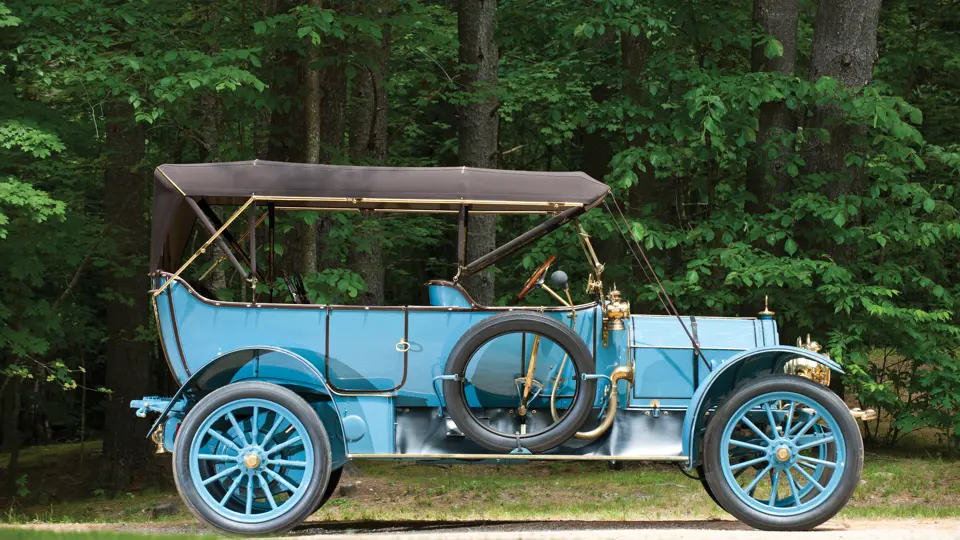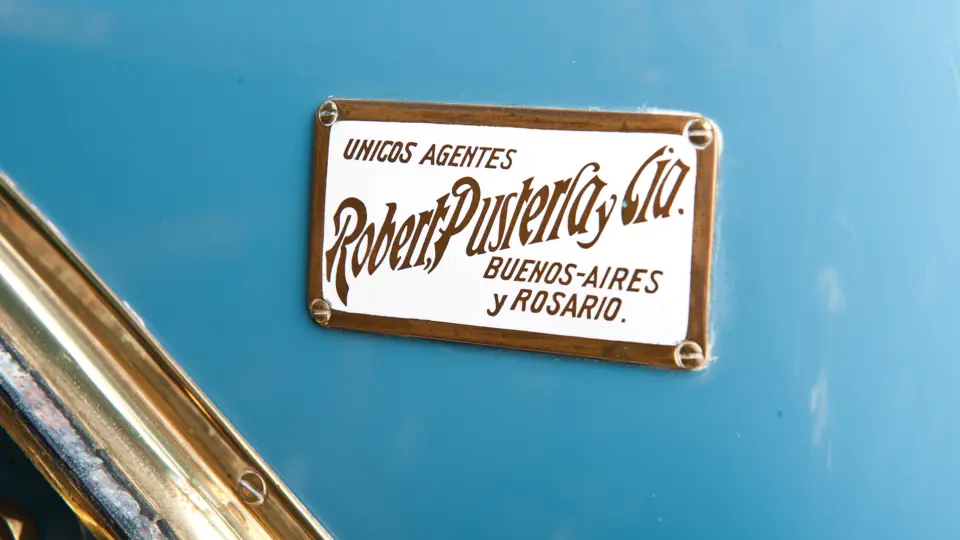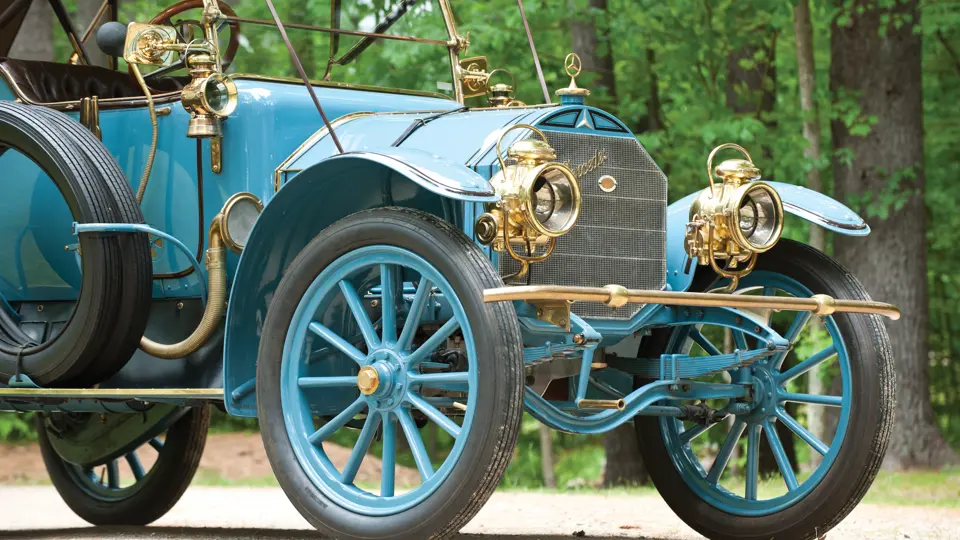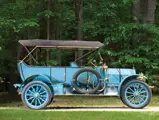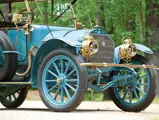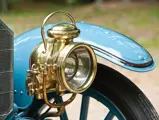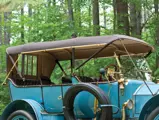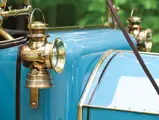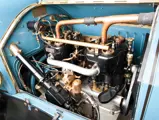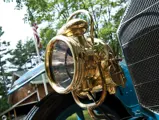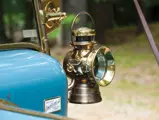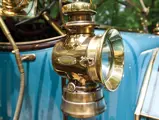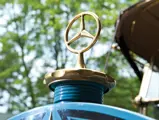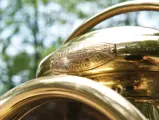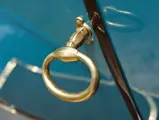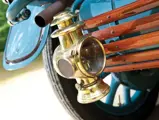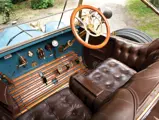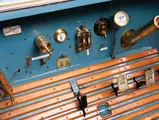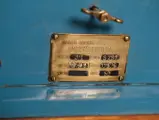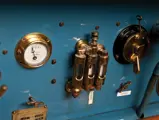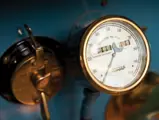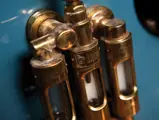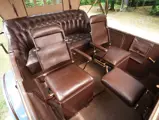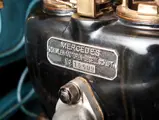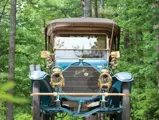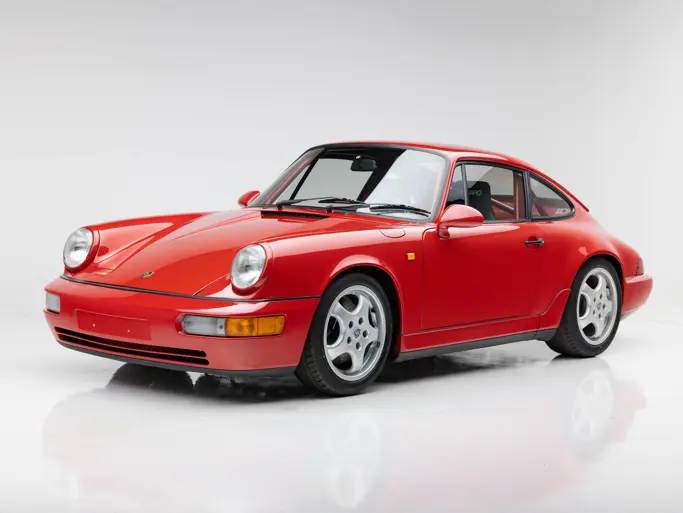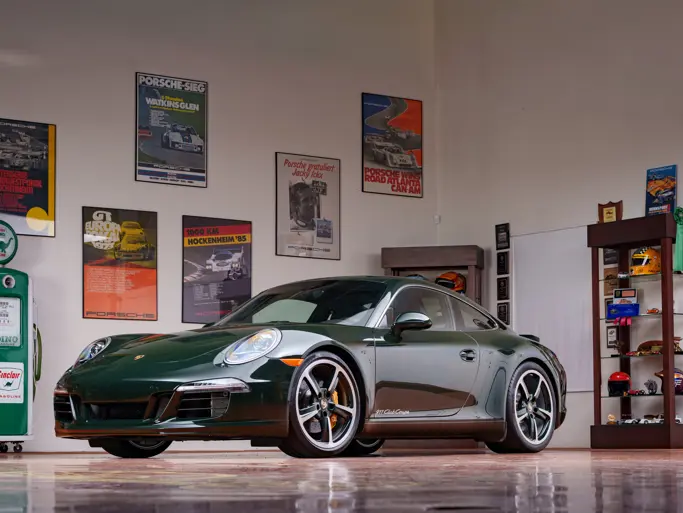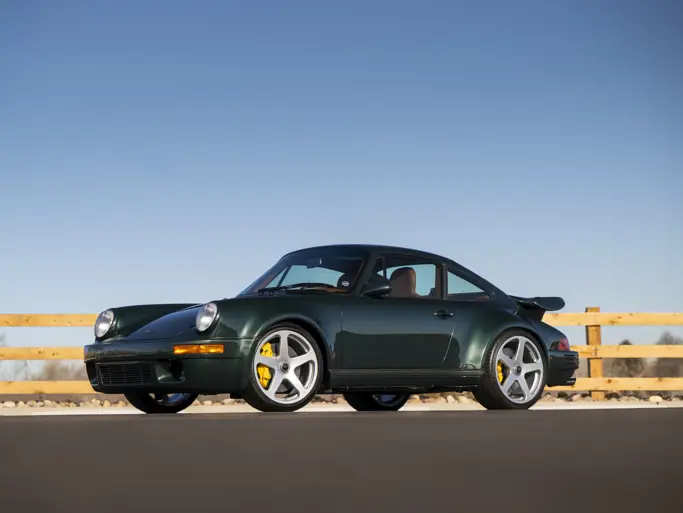50 hp, 7,240 cc T-head inline four-cylinder engine, four-speed manual transmission, solid front and rear axles with semi-elliptic leaf springs and double chain drive, and two-wheel mechanical drum brakes.
• Delivered new to Argentina
• Recent touring entries
• Older, very well-preserved body-off restoration
German-built, raised in Argentina, and named for the daughter of an Austrian-born French auto dealer, this Mercedes is as cosmopolitan as they come, even before its immigration to the United States.
Gottlieb Daimler was a talented but conservative engineer, his financial partners more conservative still. The backers felt their new company, Daimler Motoren Gesellschaft, should concentrate on stationary engines. However, Daimler and his colleague Wilhelm Maybach continued experimenting with automobiles and by 1895, were able to put several models into production. They had five different engines, each available with several types of bodies, but none of them could reasonably be called “sporting.”
Enter Emile Jellinek, an Austrian-born entrepreneur and Daimler agent, who delighted in racing cars and lent much to the company’s development. Having raced a Daimler in the 1900 Nice Automobile Week, Jellinek came away disappointed and wanted a faster car. He badgered the factory to build him what could be called an early muscle car, a light chassis powered by a 35 horsepower engine. In order to provide incentive to the company, he undertook to order 36 such cars if he were given the exclusive sales franchise for Austro-Hungary, France, Belgium, and America—and further, that the cars be named for his eleven-year-old daughter Mercédes. It was a deal that Daimler Motoren Gesellschaft decided not to refuse.
Mercedes cars were of front-engine, chain drive design, a concept adopted at the insistence of Jellinek, and powerful, with engines of six to nine liters, giving 40 to 60 Pferdestärke (German horsepower, literally “horse strength,” abbreviated PS), although smaller 1,760 cc, 8 PS cars were available. In 1905, the 15/20 PS became the first Mercedes to use shaft drive, an architecture that gained wider use across the range, although the large sporting cars continued to use chains. These sports models were made in sizes to 100 PS. The Daimler factory scored big in 1908, when Christian Lautenschlager won the French Grand Prix in a new 140 hp Mercedes.
Mercedes cars were equally suitable for the boulevard. By 1908, several European heads of state had adopted them for official travel. These included Kaiser Wilhelm II and King Leopold, of Belgium. England’s Edward VII used British Daimlers at home but kept a Mercedes for his Continental journeys.
This car was delivered new to Argentina, as noted by the badge for Robert, Pusterla y Cia., the sole Buenos-Aires agent. The body, however, is not from a local South American coachbuilder but from Daimler Motoren Gesellschaft’s own Carrosserie in Untertürkeheim. Mercedes-Benz factory coachwork is well-known from the time that it moved to new quarters in Sindelfingen, near Stuttgart. It became sufficiently renowned that today the single word “Sindefingen” ranks with the best of German coachbuilders. Sindelfingen, however, comprised a continuation of coachbuilding carried on in the Untertürkheim works, as evidenced on this car.
The car was restored several decades ago for an owner in Wisconsin, possibly before winning an AACA National First Prize in 1978, the plaque for which adorns the radiator. A full, body-off project, it has held up very well, through much use. Although there are a few blemishes to the paint and brightwork, the overall effect is very nice, and the brown leather interior shows some age but minimal wear. The steering wheel is highly varnished wood, complemented tastefully by varnished wood ribs on the toeboard for the front seat. Brass lighting is by Ducellier, of Paris. A new top was recently fitted.
The car completed a Brass and Gas Tour within the last year and reportedly performs very well. Forthright and handsome, it will be a welcome addition to any brass car collection. With its 50 hp engine, the new owner will surely delight in participating in many future touring events.




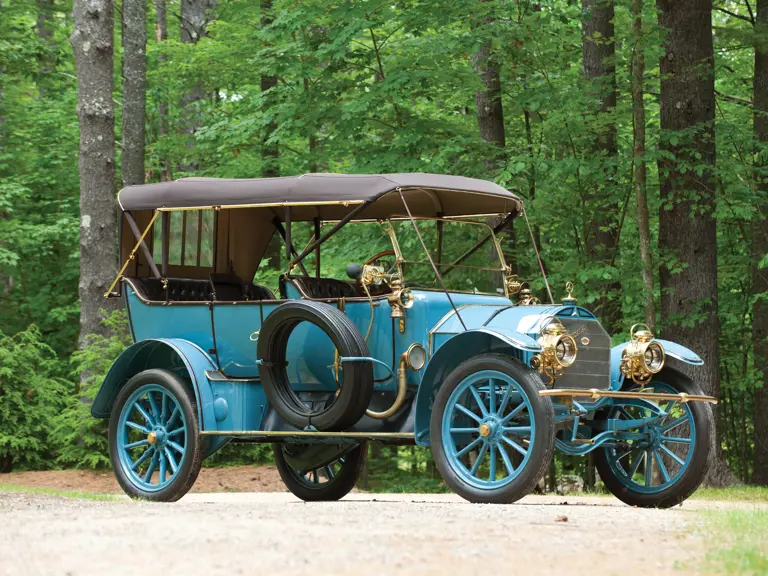

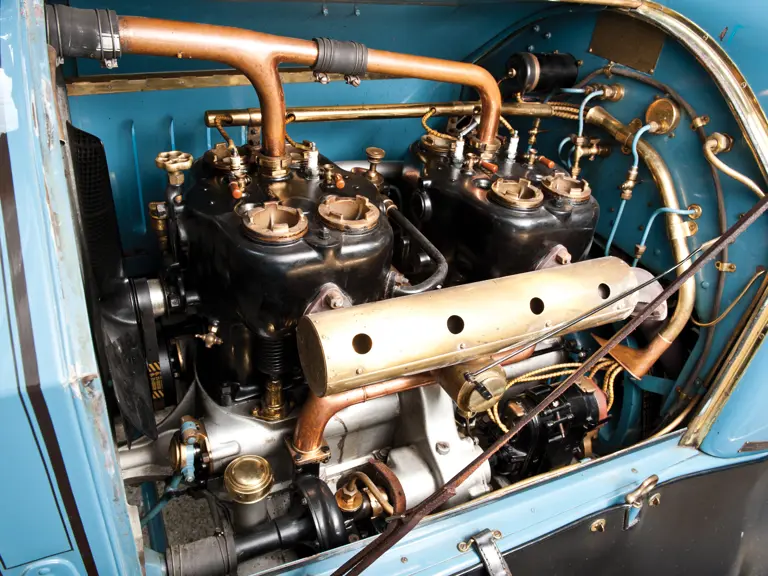


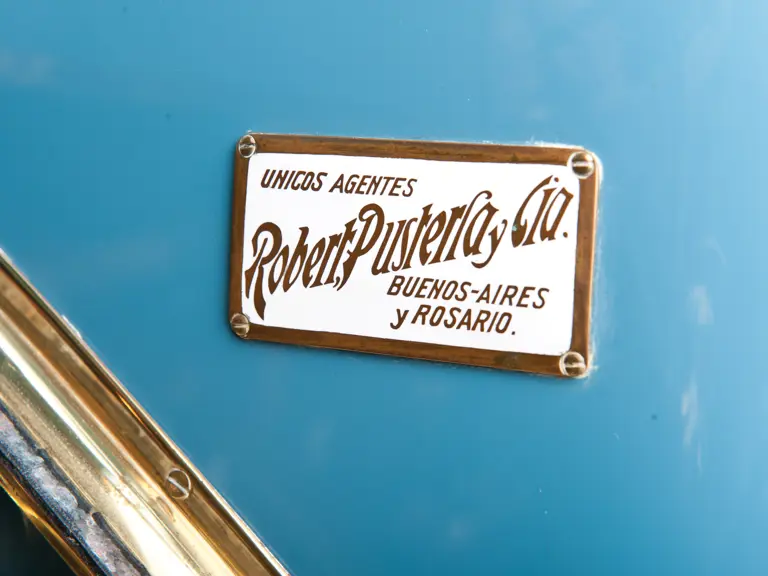
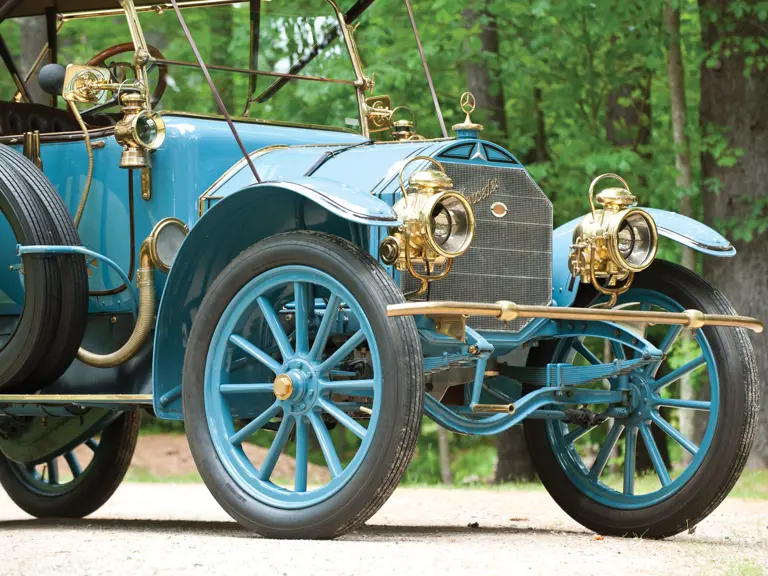
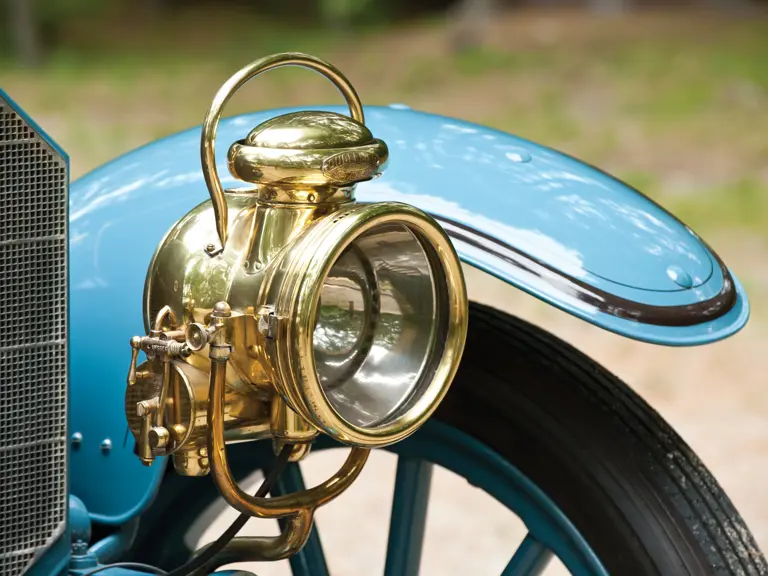
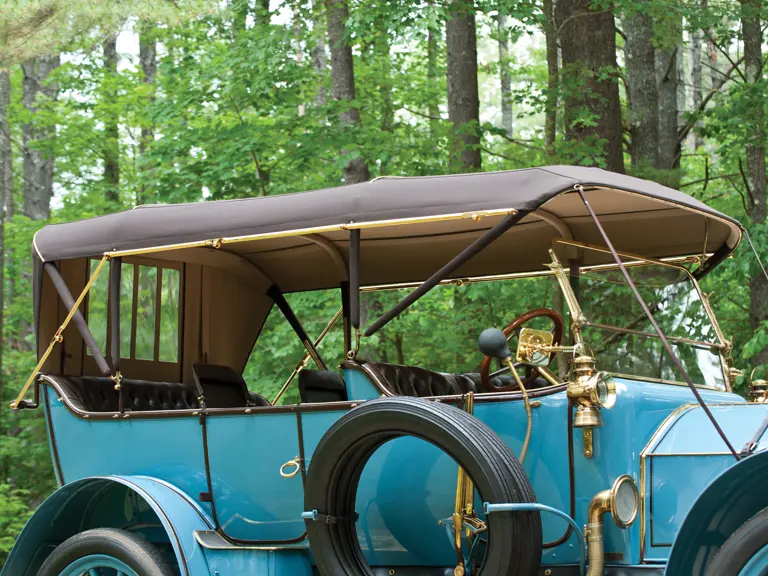
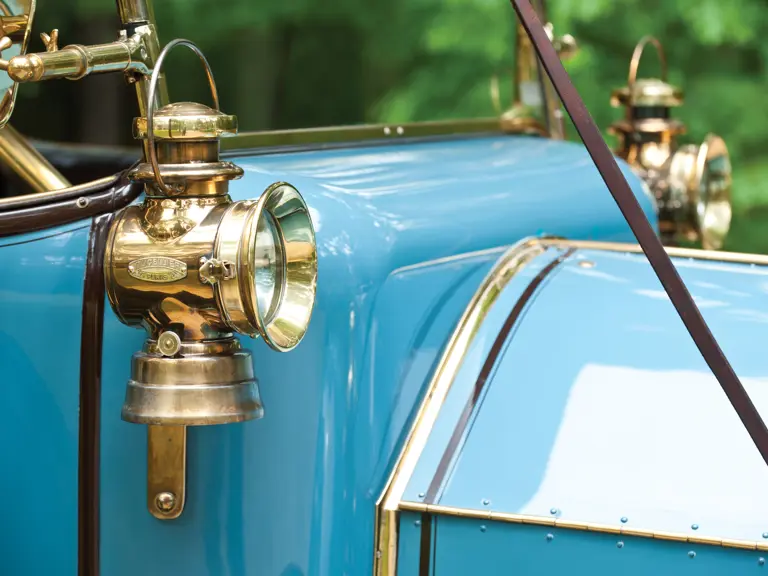
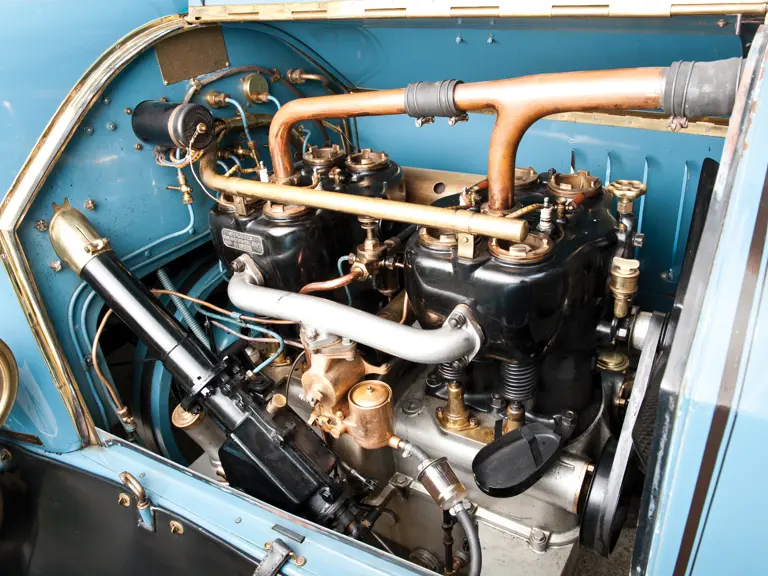
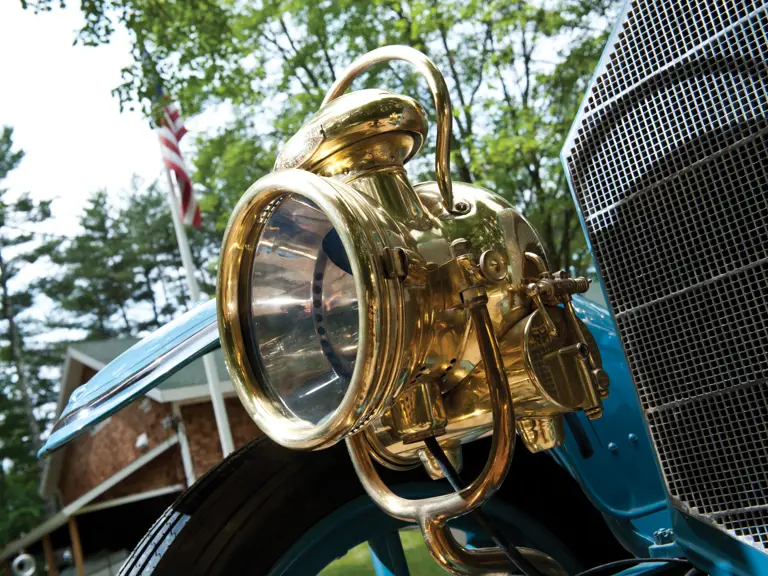
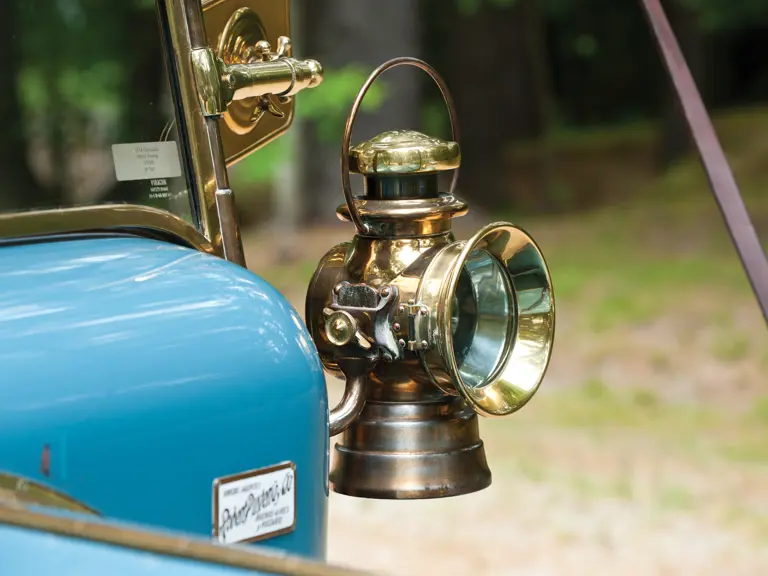
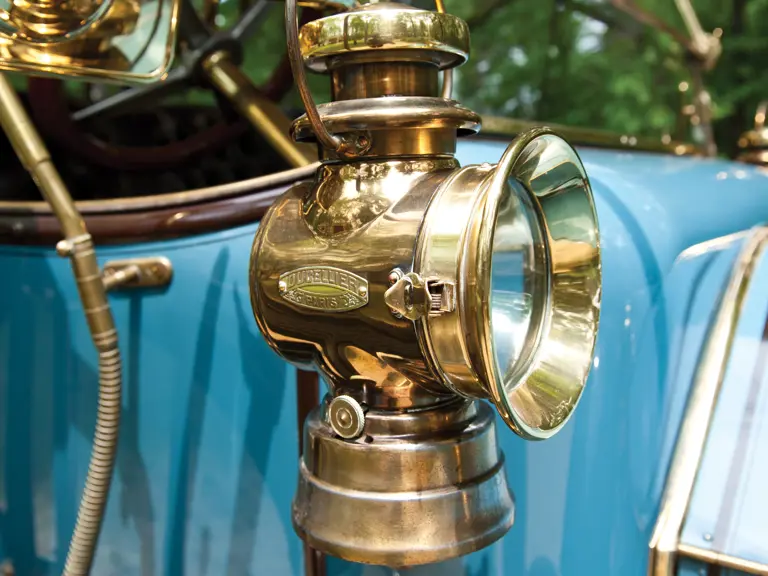
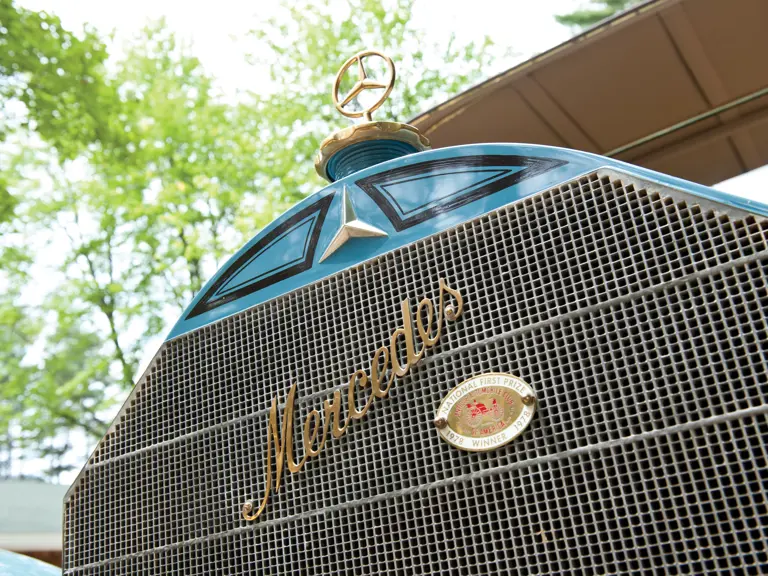
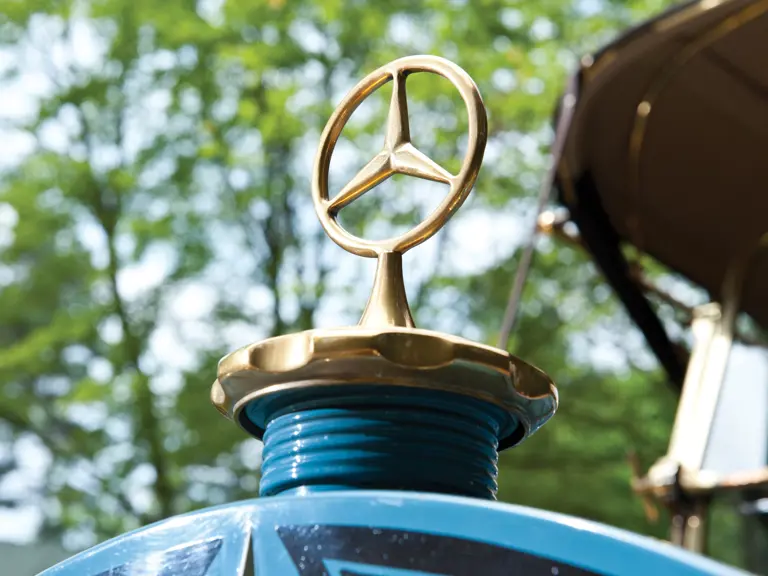



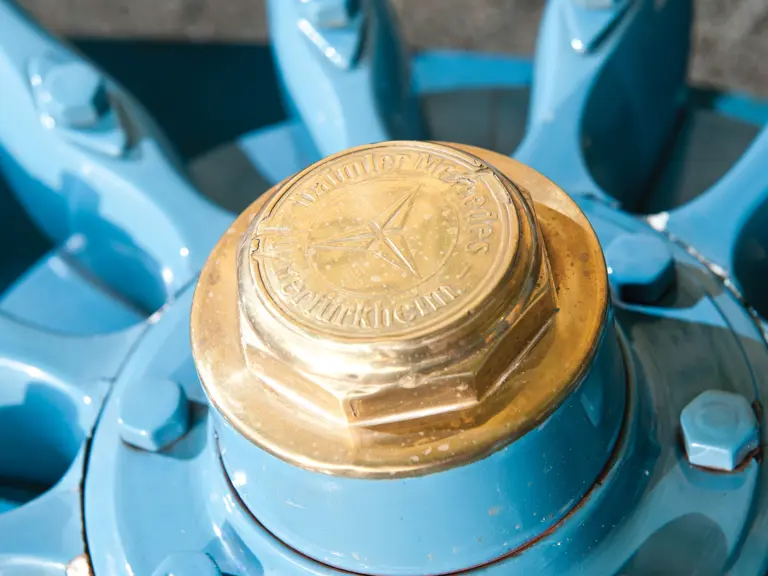

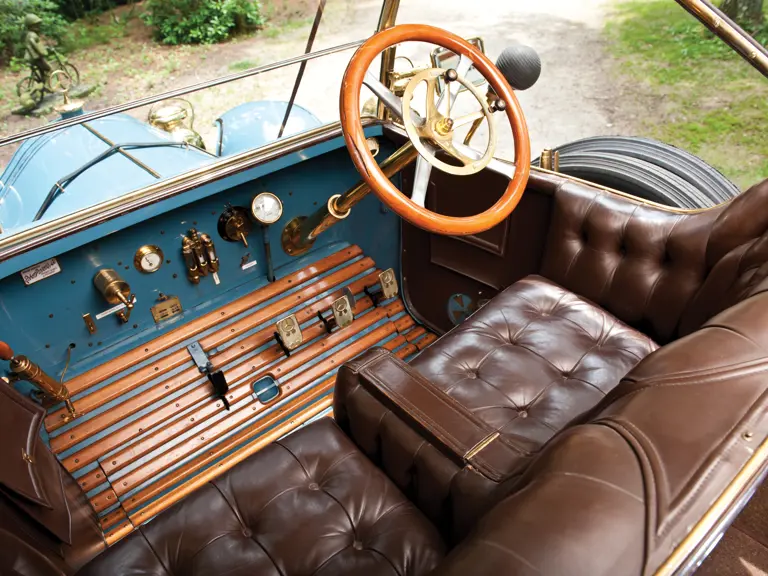

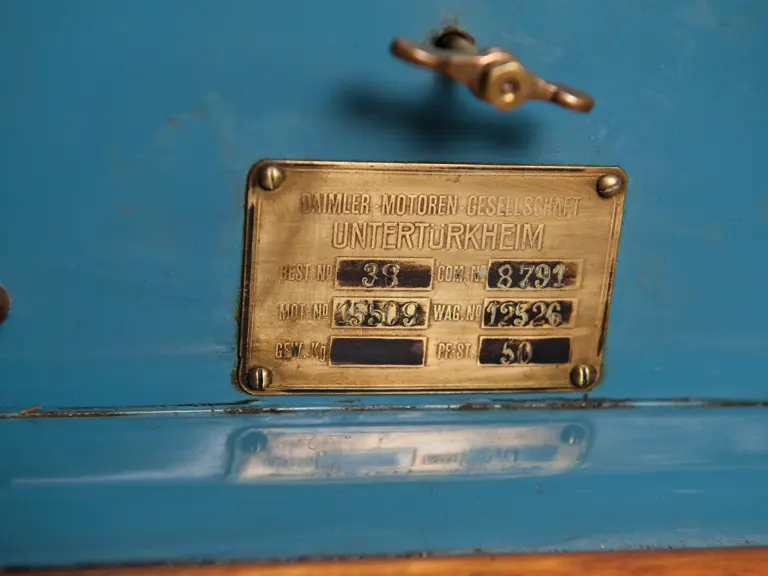
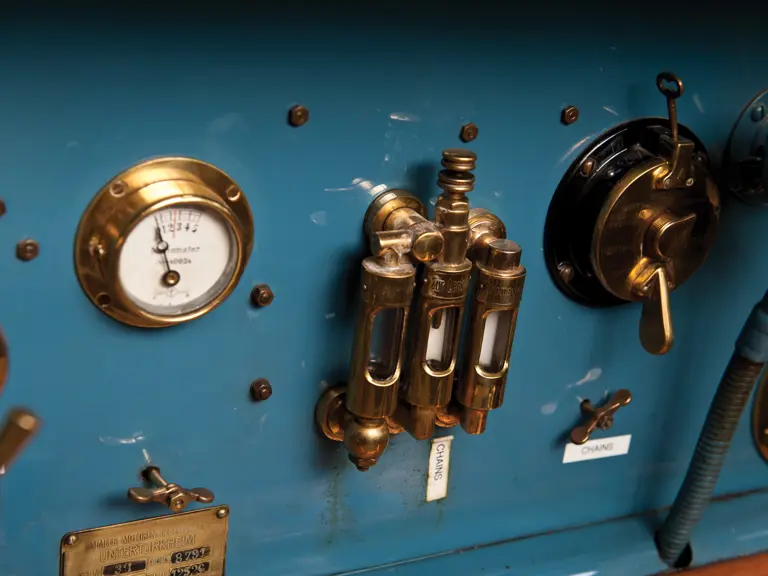
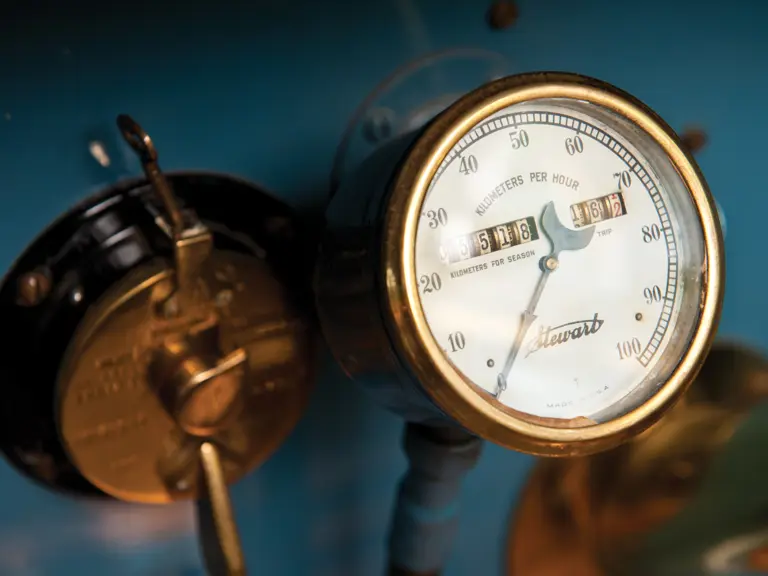
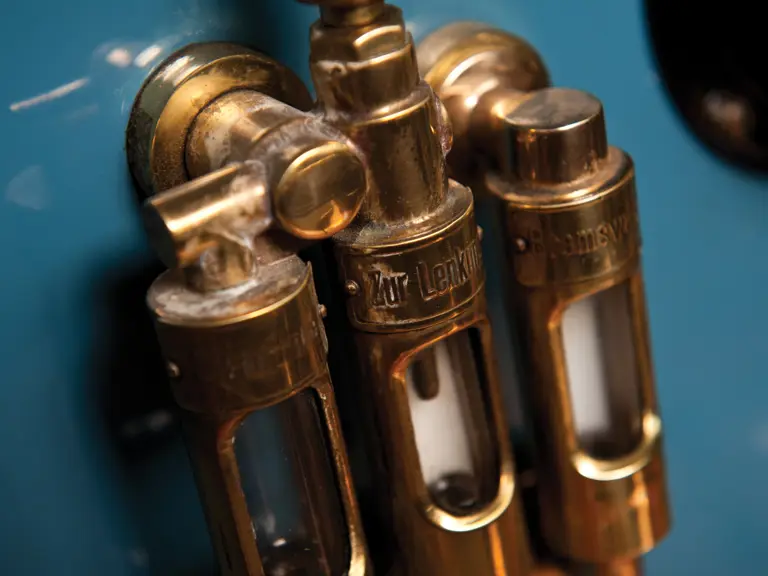
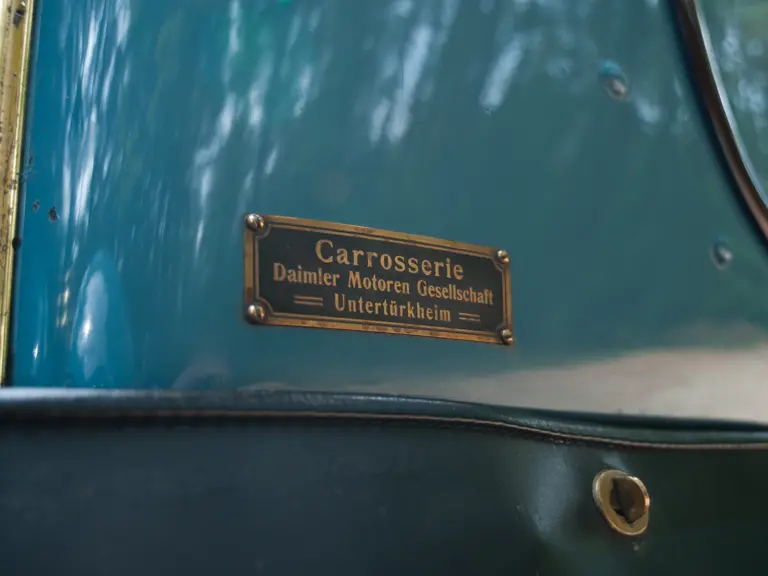
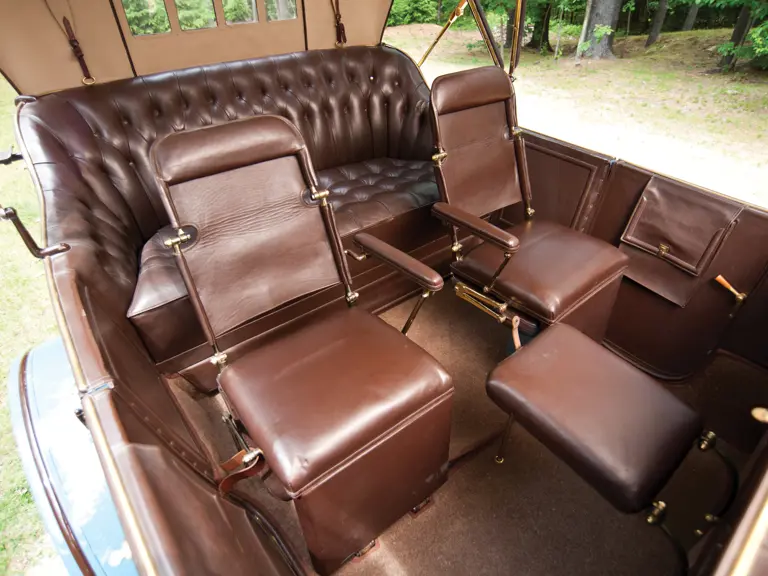
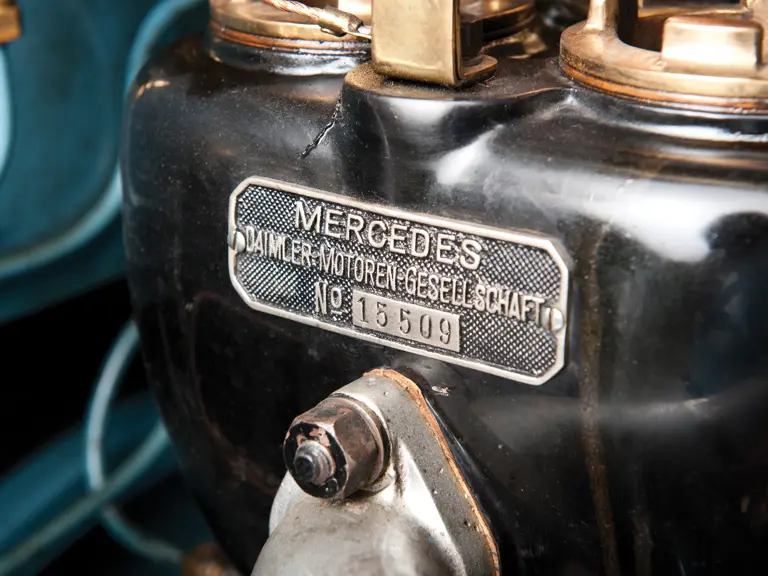
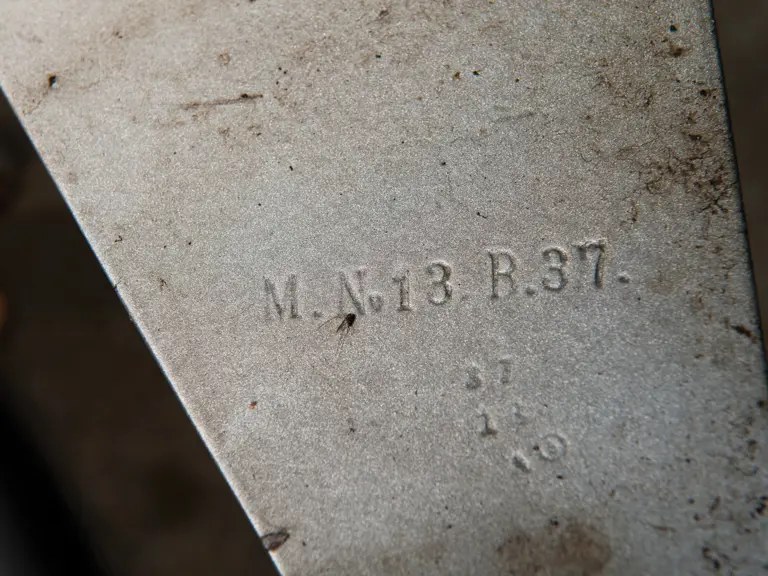
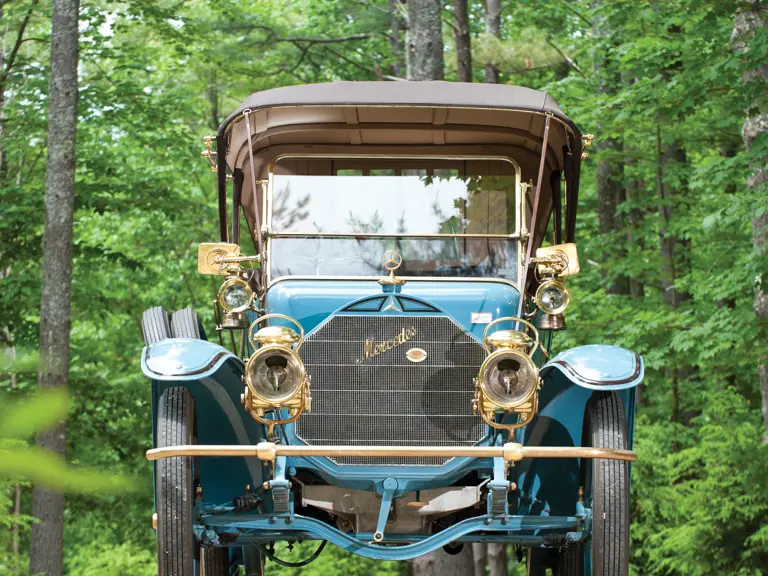
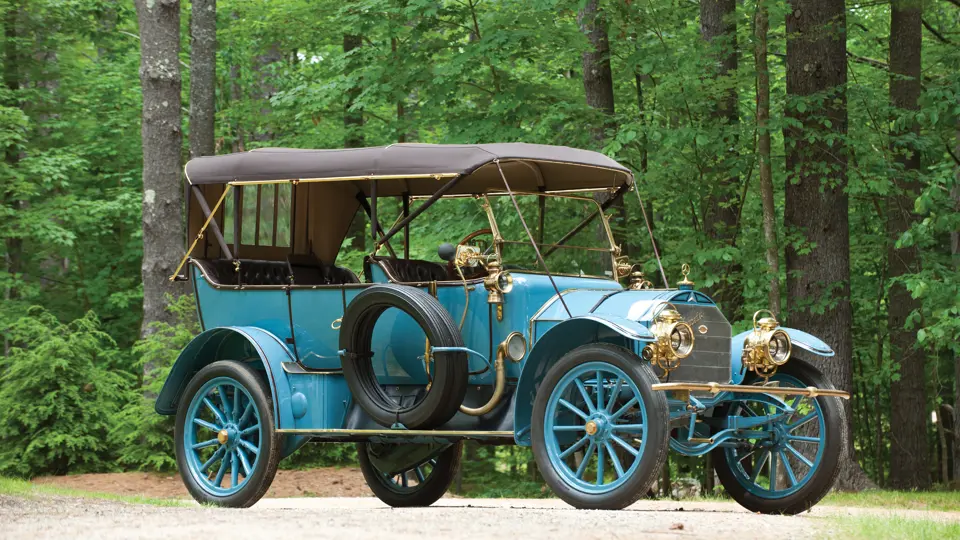
 | Monterey, California
| Monterey, California
